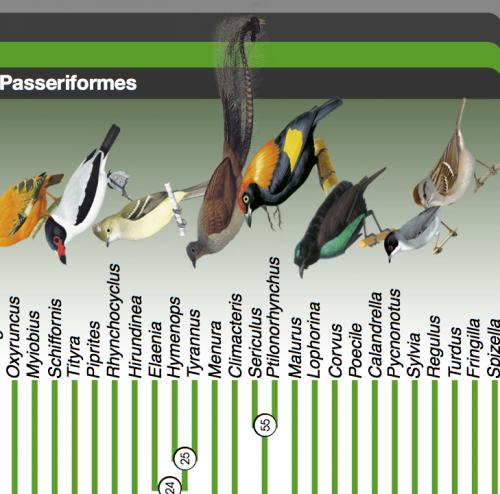
Although reconstruction of the phylogeny of living birds has progressed tremendously in the last decade, the evolutionary history of Neoaves—a clade that encompasses nearly all living bird species—remains the greatest unresolved challenge in dinosaur systematics. Here we investigate avian phylogeny with an unprecedented scale of data: >390,000 bases of genomic sequence data from each of 198 species of living birds, representing all major avian lineages, and two crocodilian outgroups. Sequence data were collected using anchored hybrid enrichment, yielding 259 nuclear loci with an average length of 1,523 bases for a total data set of over 7.8 × 107 bases. Bayesian and maximum likelihood analyses yielded highly supported and nearly identical phylogenetic trees for all major avian lineages. Five major clades form successive sister groups to the rest of Neoaves: (1) a clade including nightjars, other caprimulgiforms, swifts, and hummingbirds; (2) a clade uniting cuckoos, bustards, and turacos with pigeons, mesites, and sandgrouse; (3) cranes and their relatives; (4) a comprehensive waterbird clade, including all diving, wading, and shorebirds; and (5) a comprehensive landbird clade with the enigmatic hoatzin (Opisthocomus hoazin) as the sister group to the rest. Neither of the two main, recently proposed Neoavian clades—Columbea and Passerea1—were supported as monophyletic. The results of our divergence time analyses are congruent with the palaeontological record, supporting a major radiation of crown birds in the wake of the Cretaceous–Palaeogene (K–Pg) mass extinction.